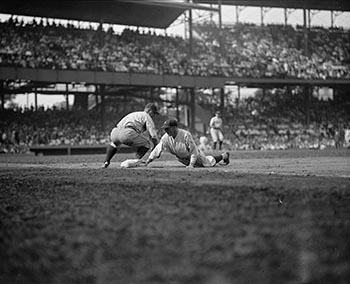Peter H. King, M.D., professor in the Department of Neurology, has received $385,000 over two years from the National Institute of Neurological Disorders and Stroke to pursue promising leads in an effort to find ways to better diagnose ALS and track its progression.
 |
| Lou Gehrig |
“There has been a longstanding effort to identify biomarkers that will both diagnose ALS early and track disease progression to help determine if therapies are effective,” said King. “It can often take 15-18 months after the onset of symptoms for a definitive diagnosis to be made, as well as months of clinical observation before the effects of a potential therapy are known. A biomarker that can facilitate diagnosis or track disease progression, or both, would fill a large clinical gap in ALS management and expedite clinical trials of novel therapies.”
King has focused on muscle as a potential source for biomarkers.
“Muscle is the ‘end organ’ affected by ALS, and changes occur in muscle prior to motor neuron death,” he said. “We believe that there are gene expression patterns in muscle from patients with ALS that represent molecular signatures of the disease.”
In collaboration with the Heflin Center for Genomic Science at UAB, King has performed RNA sequencing of ALS muscle tissues and identified more than 300 potential molecular targets that might serve as biomarkers. He and his laboratory associates are in the process of validating these targets.
“One of our targets has been validated in the mouse model of ALS and is of particular interest because it appears before the mouse becomes symptomatic and increases as the disease progresses,” said King. “This type of target would be useful for early diagnosis and to track disease progression.”
UAB is uniquely positioned for this research because of the large library of ALS and control muscle samples, as well as the large multi-disciplinary ALS clinic at UAB directed by Gwen Claussen, M.D., associate professor of neurology.
ALS was first described in 1869 by French neurologist Jean-Martin Charcot, but it was not until 1939 that Lou Gehrig brought national and international attention to the disease when he abruptly retired from baseball after being diagnosed with ALS. Most commonly, the disease strikes people between the ages of 50 and 70, and as many as 30,000 Americans have the disease at any given time.